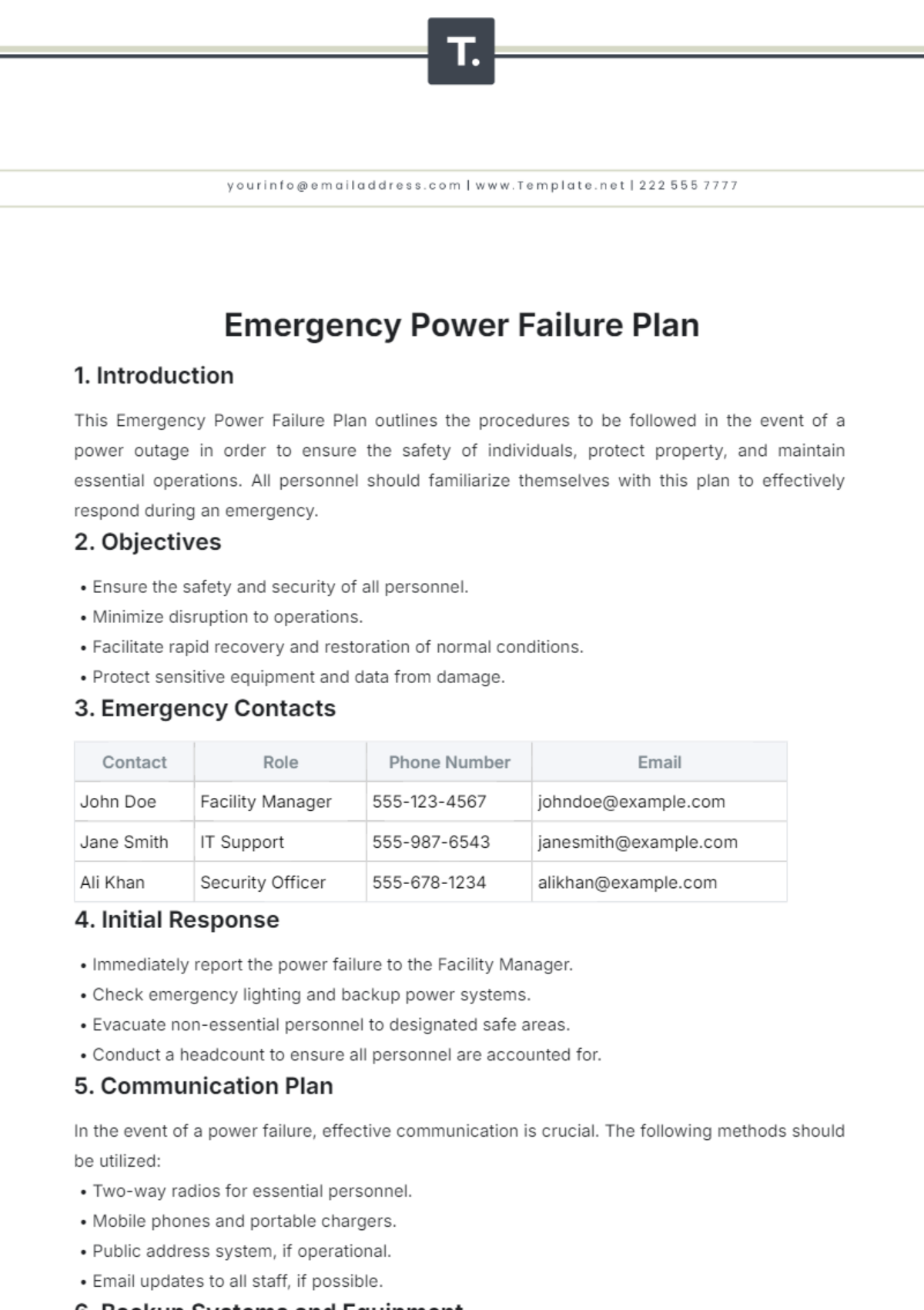Emergency Access Plan
1. Introduction
The Emergency Access Plan establishes a structured and efficient framework to manage access during critical incidents. Its primary aim is to ensure a swift response while safeguarding personnel, assets, and operational continuity.
2. Purpose and Scope
Purpose:
To define clear procedures and assign responsibilities for securing and granting access in emergency situations.
Scope:
Covers all facilities, systems, and personnel involved in emergency response and management.
2.1 Goals:
Enable rapid access to critical areas and information.
Ensure the safety and security of all personnel and assets.
Maintain strict adherence to legal and regulatory standards.
3. Roles and Responsibilities
3.1 Emergency Access Coordinator:
Oversees the implementation of the plan.
Coordinates with relevant stakeholders during emergencies.
3.2 IT Department:
Ensures technical access and security protocols are followed when accessing systems in emergencies.
3.3 Security Personnel:
Verifies access credentials and maintains physical security during the emergency.
4. Emergency Access Procedures
4.1 Identification and Authentication:
Require identification and authentication for all personnel.
Utilize emergency badges, credentials, or biometrics for verification.
4.2 Access Log:
Record all access activities to maintain accountability and enable traceability.
Logs should include the name, time, and purpose of access.
4.3 Escalation Protocols:
Define escalation procedures for granting expedited access to critical areas.
5. Communication Plan
5.1 Notification System:
Establish automated notification systems to alert stakeholders promptly.
Integrate email, SMS, and phone alerts for redundancy.
5.2 Communication Channels:
Use designated primary channels (email, secure messaging apps).
Identify backup channels (radio, phone trees) to ensure continuity.
6. Training and Exercises
6.1 Training Programs:
Provide periodic training for all emergency response personnel.
Emphasize the use of tools and adherence to protocols.
6.2 Drills and Simulations:
Conduct regular drills to test plan effectiveness.
Use insights from drills to refine and improve procedures.
7. Review and Maintenance
Schedule regular reviews to ensure alignment with evolving regulations, technology, and organizational changes.
Update the plan as necessary, ensuring all stakeholders are informed of modifications.
8. Conclusion
A robust Emergency Access Plan is essential for ensuring prompt, secure, and effective responses during emergencies. This framework provides a foundation that can be tailored to the unique requirements of your organization, ensuring preparedness and resilience.
Appendix
Contact List: Include updated contact information for emergency stakeholders.
Access Flowcharts: Visual aids detailing access procedures.
Checklists: Quick-reference guides for personnel during emergencies.
Regulatory References: Include compliance standards relevant to the organization.

















































